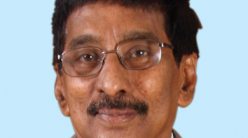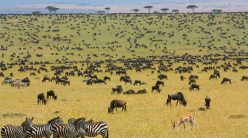Tracing the growth of a model training programme at IISc’s Challakere campus
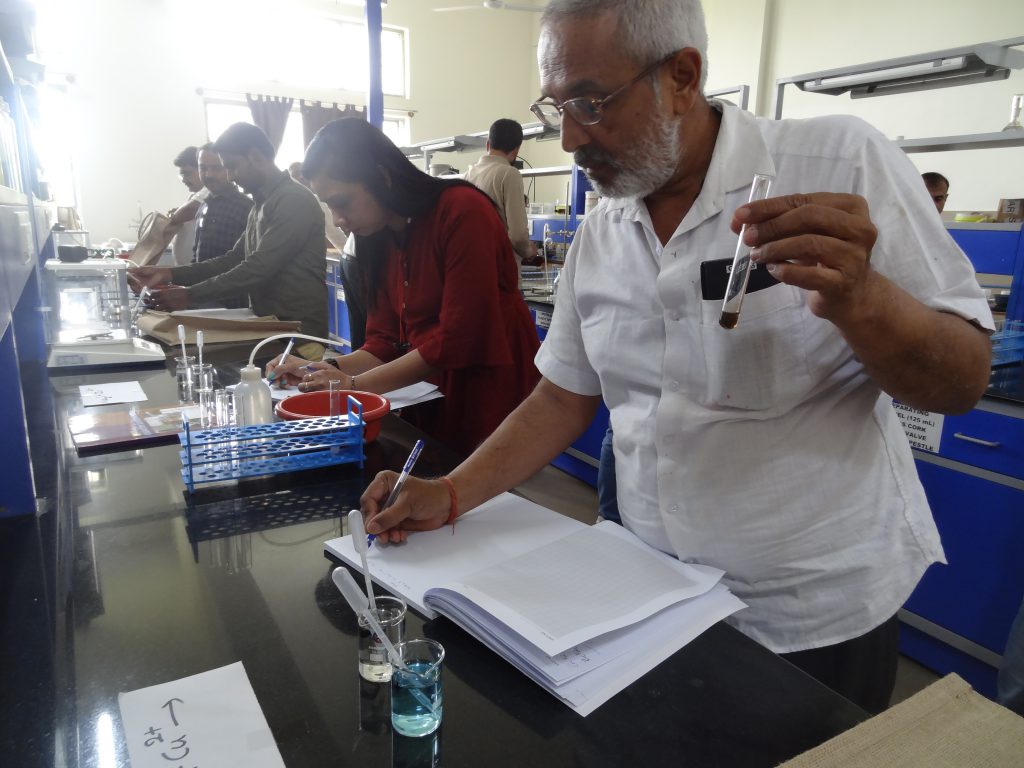
Smita Bala Panda is among the 112 teachers who have travelled from Odisha to participate in the Teachers’ Training Programme at the Talent Development Centre (TDC), in the IISc Challakere campus. She covered the journey from Ganjam district to Bangalore via train, then took a bus to finally reach Challakere late on 3 August 2023. The 10-day training will begin early next morning. Smita teaches biology to students from class nine to class 12 at the Odisha Adarsh Vidyalaya school in Hinjilicut, a small town in Ganjam district. She manages 160 students almost single-handedly – teaches them theory, conducts practicals, organises “doubt” sessions and remedial classes. Though there is no lack of infrastructure in her school, there is a pressing need for trained instructors, as only one demonstrator is available to teach all three disciplines – physics, chemistry and biology – for all four classes, each having two sections with 40 students per class.
The role that teachers like Smita play is critical to society. By training the next generation of leaders, professionals and citizens, their impact goes far beyond the classroom – to communities, cities, and the overall development of the nation. Hence, it is crucial that such teachers keep themselves updated with novel and effective teaching methods and pedagogical approaches. Unfortunately, their demanding work schedules do not allow them to stop and evaluate their own teaching process, or clarify doubts, or update their knowledge. It is this gap that the TDC, established more than a decade ago, sought to address.
It is crucial that teachers keep themselves updated with novel and effective pedagogical approaches
Making a difference
In 2019, when the TDC was nearing 10 years of existence, its convenors decided to carry out a self-assessment study among 24 randomly selected government schools in Vijayapura, a district in Karnataka. In the study, the percentage of students who scored more than 60% marks in science and mathematics in the Secondary School Leaving Certificate (SSLC) exam was plotted for five consecutive years (2015-2019). Strikingly, in certain schools, the number increased by 30% between 2015 and 2019. It turned out that the science and maths teachers in those schools had all been trained at the TDC.
India has various teacher training programmes organised by several institutions under diverse schemes. TDC stands out amongst them because of its approach – learning by doing. The residential programme offers training to teachers from the high school (standards 9-10) level to the MSc level, in physics, chemistry, biology and mathematics. The duration of the training varies depending on the content that is required to be covered. High school teachers spend 10 days, whereas BSc and MSc teachers spend up to 16 days at the Challakere campus. Science teachers are trained using experiments, while mathematics teachers are taught problem-solving approaches. These experiments and problems are designed, devised and disseminated by the TDC.
“Almost every line of the National Council of Educational Research and Training (NCERT) textbooks has been converted to an experiment or a problem,” says DN Rao, former Professor at the Department of Biochemistry, IISc, and the present convener of the TDC. “These experiments and problems – and their corresponding manuals – cannot be found anywhere else. The equipment and experiments are designed in-house at the Centre.”
The Centre also has ample laboratory facilities; at any given time, 50 individuals can carry out the experiments. The state government nominates the participants for the high school teachers, and the respective school boards nominate the 11th and 12th standard teachers. Besides this, the Jawahar Navodaya Vidyalaya schools and the Kendriya Vidyalaya schools also send their teachers every year. Each batch consists of about 100 teachers. About 18 such batches are trained per year. Karnataka has 18,500 high school government science and mathematics teachers. As of June 2023, 16,000 of these teachers have been trained. A total of 18,000 teachers from across the country have been trained at the TDC.
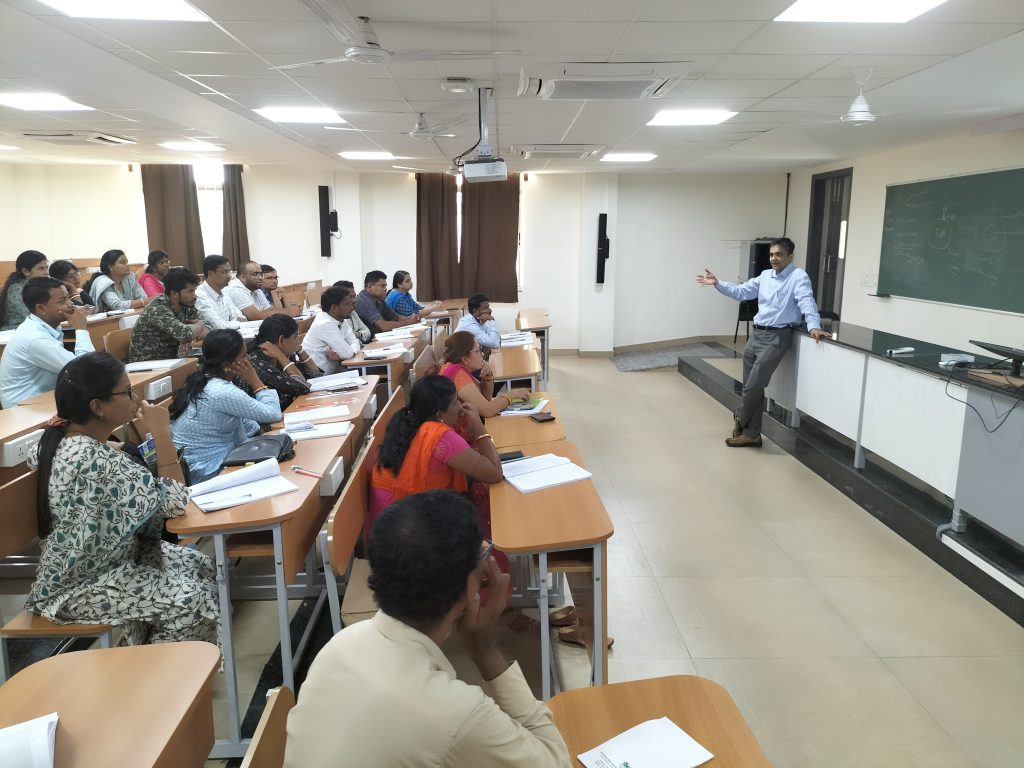
“Almost every line of the National Council of Educational Research and Training textbooks has been converted to experiment or problem”
Born on a sheep farm
This is not the first time that IISc has trained teachers, which could be a possible reason why the Institute has been able to sustain this programme successfully. In the late 1970s, some faculty members, motivated by the virtue of giving back to society, travelled to rural parts of the state to train high school teachers. Since the 1980s, under the aegis of the Centre for Continuing Education (CCE), IISc faculty members have been travelling across Karnataka to train science and mathematics high school teachers.
But it was only in IISc’s centenary year (2009) that a consolidated teachers training programme was conceived at the newly acquired Challakere campus. The then Director, P Balaram, reached out to MS Hegde, who was then Professor at the Solid State and Structural Chemistry Unit (SSCU) and was actively involved with CCE’s teachers training programme. Balaram asked Hegde if a full-fledged teachers training programme was feasible at Challakere, and if the latter could spearhead it. A committee was formed, headed by BN Raghunandan, former Professor at the Department of Aerospace Engineering, to assess the programme’s prospects. Armed with ideas, the committee, along with Hegde, set out to visit Challakere.
At that time, however, the newly acquired campus had no infrastructure to house such a programme. Around the same time, the Government of Karnataka’s Department of Animal Husbandry freed up two buildings that once used to be sheep breeding farms, close to IISc’s Challakere campus. These two buildings were loaned to IISc to start the programme.
Hegde located another 28 buildings and a dilapidated sheep breeding farm in the vicinity that could also be used. It was decided that the programme would start under this temporary arrangement until the campus infrastructure was ready. Funds for the programme came in the form of a Rs 2 crore grant from the Department of Science and Technology, Government of Karnataka. On 26 February 2011, the then Chief Minister of Karnataka, BS Yediyurappa, inaugurated the programme and TDC at Challakere. In March 2011, the report from the first training programme was presented before the IISc Court and was instantly appreciated. The Government of Karnataka approved a grant of Rs 1.5 crore for the subsequent year. Hegde recalls that it was a satisfying but uphill task to get the programme off the ground. “It was a tough job; everything did not go through easily. It was an extremely underdeveloped district. There was only one source of water: a borewell. There were times when it failed and there was no drinking water. Initially, electricity was available for only three hours and we had to make special arrangements for constant power supply so that the classes could go on uninterrupted. There were times without electricity at night in sordid summers. Cooking gas was limited, and food arrangements were very difficult. It was [also] difficult to get GST numbers or vouchers and invoices for the money spent.”
The programme grew stronger in the subsequent years. In 2015, it caught the attention of the Prime Minister of India, Narendra Modi, during his visit to IISc’s Bangalore campus. A grant under the Pandit Madan Mohan Malaviya National Mission on Teachers and Teaching was approved to provide training to teachers from outside Karnataka as well. This additional grant continued till 2021.
In 2016, with a CSR grant provided by Hindustan Aeronautics Limited (HAL), development of infrastructure at the Challakere campus began in full swing. The campus today has two primary training units, the HAL-IISc Skill Development Centre, to provide training and supplementary coaching in engineering skills, and the Talent Development Centre, under the aegis of which the teachers training programme operates. In April 2020, the teachers training programme finally shifted from the sheep breeding farm to its own location on the Challakere campus.
Practice over theory
The distinguishing feature of the training programme is its engrossing curriculum that emphasises practice over theory. Out of the eight hours in a typical workday, three hours are dedicated to classroom lectures, three hours to laboratory or problem-solving sessions and the remaining two hours for breakouts during breakfast, lunch and tea. Every day, an assignment is given to the teachers to solve and present the next day.
The rigour of the programme also demands dedicated individuals to drive it. Each discipline has one coordinator, at least two Research Associates and two Project Assistants. The teaching is done almost entirely by IISc faculty members who travel from the Bangalore campus to Challakere for a few days and return after their session is over. Hegde says, “The methodology of the programme has evolved over time. I must admit that our very first training was a failure because we did not know how to gauge its effectiveness.” He then decided to introduce pre- and post-training tests from the second batch onwards. The trainees are given one test before the session begins and another at the end of the training programme, to assess if they are able to imbibe what was being taught during the training. There have only been a handful of instances when the trainees have not made a drastic improvement in the post-tests, Hegde says. “Utmost care is taken so that the difficulties of pre- and post-test question papers are of the same level.”

Well-known mathematicians CR Praneshachar and Venkatachala BJ are the current coordinators for mathematics. Praneshachar, who has been associated with the programme since its inception, says, “It has progressed to become more systematic now. Many teachers have told us that they have not solved as many problems in their entire careers as they solved during these 10 days. Their attitude towards the subject changes, from an average to a more rigorous understanding.” Praveen Shanbhag, Abisha V and Shreedhar Byakodi are Project Associates in mathematics. They prepare the question papers and assignments and tutor the trainees in solving them. They have developed unique paper-cutting methods to demonstrate complex mathematical problems and their solutions.
Aravinda S, Jugeshwar Singh K and Prabhu KR are the present coordinators of biology, physics and chemistry respectively. Aravinda, who has also been associated with the programme for a long time, says that having a separate campus location for such a programme makes a lot of difference. When the training was held at the sheep breeding farm, the chemistry and biology disciplines had to share the same lab facilities. Now, there is more space, and each discipline has its own lab and modern equipment, and therefore they are in a better position to plan and design the courses.
Aravinda points out how facts like the presence of bacteria everywhere are only mentioned in textbooks but never demonstrated. He adds that they do simple tests which ensure that there is no scope for doubt among the teachers after their training. “We prepare multiple petri dishes with nutrient media and expose them to the soil, air and water. Within 24 hours, the teachers can observe the growth of bacteria and see them under the microscope.” Similarly, the instructors demonstrate the release of carbon dioxide during germination by putting a few germinating seeds along with potassium hydroxide inside a flask connected to a tube. Water is placed at the other end of the tube. When the seeds germinate, they release carbon dioxide, which absorbs the potassium hydroxide, creating a vacuum, allowing the water level at the other end of the tube to rise up.
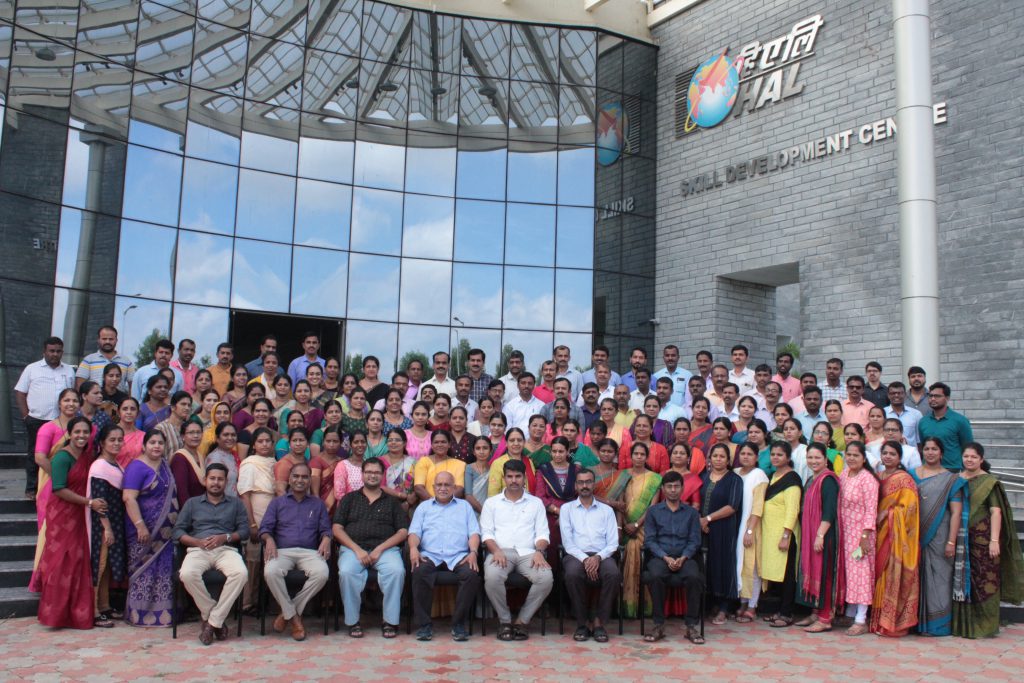
Raghavendra MK, too, has been associated with the TDC since the beginning. He teaches physics. He was also an instructor with the Institute’s UG Programme at the Bangalore campus. “I used to see expensive imported instruments at the UG labs and devise them locally at TDC at dirt-cheap cost. For example, for measuring projectile motion, simple tools like a big protractor and desoldering pump are used. Arrangements are made to enable the desoldering pump to project a small ball at different angles. The ball leaves a mark on the carbon sheet kept in the ground as it falls. This enables us to measure things like distance, angles, and so on. The teachers get to spend a little more time with the concepts.” He adds that the teachers come with excellent information but very little bent toward analysis. They start appreciating the training once they realise the small corrections they must make in their teaching. After this, they themselves ask for topics they are doubtful about and this sets the agenda for the subsequent two days.
During the training, the trainers and the trainees are constantly on their toes, says Sneha Ramachandraiah, Project Associate in biology. “It is a demanding yet satisfying role.” Prasanna, Project Associate in chemistry, has been pursuing his doctoral studies while working at the TDC, and has published six papers so far. He explains that the TDC provides sufficient support for the staff to pursue their own academic interests outside of the training hours.
Road ahead
The programme, which began with the training of Karnataka government school teachers, today trains teachers from across the country, both from public and private schools and colleges. The trainees stay in hostels set up specifically for this programme on campus. A vehicle is provided to and from TDC and the hostel, and breakfast, lunch and dinner are arranged at the TDC. Many trainees say that it is a hectic programme, but they find it quite rewarding. Sukhdev Kaur, a JNV high school teacher from Faridkot, Punjab, says that she thoroughly enjoyed the atomic configuration session – all her doubts were clarified and she feels she is better equipped to teach her students henceforth. TDC has also signed MoUs with state governments in Odisha and Goa to train their entire set of government school teachers. Talks are in progress with a few state governments in northeast India. A BSc-BEd programme under the TDC is also in the offing.
Rao believes that there is still room for improvement. Both he and Hegde admit that a programme of this scale cannot run without permanent staff and teaching faculty. Challakere is still an underdeveloped region with a limited supply of daily requirements like groceries. It gets blisteringly hot during the summer, and the water supply has only recently been improved through a pipe connection from the Vani Vilasa Sagara dam. More roads and residences need to be built. Rao adds that if these logistical aspects are addressed, the TDC can grow in leaps and bounds.

